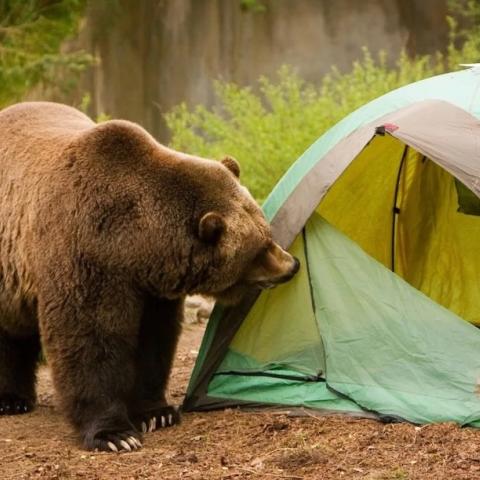
Canoe Camping in Grand Teton National Park
Most folks who head to Grand Teton National Park in Wyoming most likely have hiking and climbing on their minds. But if you're going there with paddle in hand, this guidebook can help you make the most from venturing out onto Jackson and/or Leigh lakes in the park.
Tim Odell pulled this book together from years of experience he gained paddling in Grand Teton. He started exploring the park's waters in 2011 with friends from college, using a Kevlar canoe his parents had purchased back in the '80s.
In his self-published book, Odell discusses the permits you'll need to push off from shore, provides details on fishing licenses you'll need if you hope to catch your dinner, includes equipment checklists, and offers some safety tips.
His stress on the winds that usually arise in afternoons shouldn't be taken lightly, as they can challenge inexperienced paddlers by whipping up whitecaps and quickly swamping boats. Heed his warnings even after coming ashore, as Odell knows from experience that winds don't just impact you when you're on the water.
"Wind may blow a canoe offshore in a single gust if your boat is not firmly secured by rope," he writes. "Our canoe was blown 2 miles to the opposite side of Jackson Lake on one occasion, despite being pulled far up on land and sheltered in willow pushes."
The guts of the book revolve around where you can launch your boat and campsites that await you. You will, of course, need to reserve the sites in advance with the park. That can be tricky, as the park relies on recreation.gov for advance reservations, and the window to grab one is somewhat limited. For 2020, for example, advance reservations were taken from January 8 through May 15. So if you decided on May 16 that you wanted to spend a couple nights on the lakes this year, you'd need to hope you could land a permit when you reached the park.
The good news is that only one-third of available reservations can be made in advance. The rest are issued on a first-come, first-served basis by visiting one of the park's visitor centers (Craig Thomas Visitor Center at Moose Junction, Colter Bay Visitor Center, or the Jenny Lake Ranger Station).
Campsite details provided by Odell are short and straightforward. For example, the Lizard Creek Campground at the north end of Jackson Lake "has many fine campsites that are available on a first-come, first-served basis, but you should arrive before 10 a.m. to get a campsite, as they fill up quickly. This launch site has a sandy beach, bathrooms, and a small parking area."

Jackson Lake is in a spectacular setting below the Tetons/Kurt Repanshek file
The author's rundown of the Wilcox Point backcountry site is equally concise: "It sits on a peninsula, at the mouth of Webb Canyon. This is the best site for seeing wildlife: elk, river otter, beaver, bald eagles, abundant American white pelicans, and potentially bear."
"It is an easy ~1 mile traverse across Jackson Lake from Lizard Creek Campground, if the lake is calm," he notes.
Odell provides full-color photos of the campsites, which is a nice touch, and some of his listings incude "pro's" and "con's." For instance, in his rundown of the South Landing Campsite he notes that this is "not a good place for a small group if there is a large group in the group campsite; noise from the sewer treatment plant."
This is a barebones guidebook. If you're looking for a guidebook with rich descriptions of the vegetation around the lakes, that details the geology of the Tetons soaring above you, or offers ruminations on the wilderness setting, this is not for you.
But if you're looking for a guidebook that lists the available campsites, offers photos of them, and provides some details of those sites, it might just be right for you. There also is ample space for you to make your own notations for future trips, or to wax poetic. It can be found on Amazon.com for $15.




 Support Essential Coverage of Essential Places
Support Essential Coverage of Essential Places






